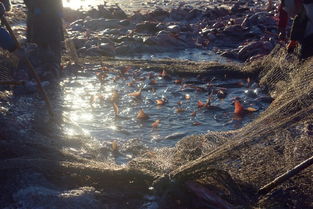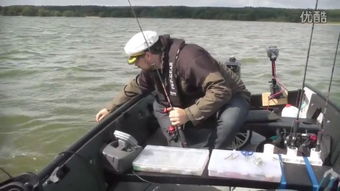
Introduction:
Winter fishing can be a challenging yet rewarding experience for anglers. The cold weather, reduced fish activity, and challenging conditions demand a different approach to bait preparation and fishing techniques. In this article, we will delve into the art of winter fishing, focusing on how to effectively prepare your bait to increase your chances of success on the icy waters.
Understanding Winter Fish Behavior:
Before we dive into the specifics of bait preparation, it's crucial to understand how fish behave during the winter months. Cold water temperatures slow down fish metabolism, making them less active and more selective about what they eat. Therefore, your bait needs to be both attractive and efficient at诱ing these cold-weather fish.
Choosing the Right Bait:
Live Bait vs. Artificial Lures:
- Live Bait: Live bait such as minnows, leeches, or worms can be highly effective in winter. They are more likely to be taken by fish that are less active.
- Artificial Lures: For anglers who prefer artificial baits, soft plastics, jigs, and spinnerbaits can be effective. The key is to choose baits that mimic the natural prey of the fish you're targeting.
Local Preferences: Research the species you're targeting and their preferred winter bait. For instance, northern pike might be more attracted to large, shiny spoons or jigs, while trout might prefer smaller, more natural-looking baits.
Preparing Your Bait:
Live Bait:
- Minnows: Keep minnows in a well-aerated container with cold water. Avoid overcrowding to prevent stress and death.
- Leeches: Store leeches in a bait bucket with ice and a small amount of water. Change the water regularly to keep them fresh.
- Worms: Use nightcrawlers or red wigglers. Keep them in a container with damp paper towels to maintain moisture.
Artificial Bait:
- Soft Plastics: Rig soft plastics with a small split ring or a bait holder. Use a light-tipped rod to feel the subtle bites.
- Jigs: Choose jigs with a bright color or a flash to attract fish in low-light conditions. Keep them moving slowly and erratically to mimic struggling prey.
- Spinnerbaits: Use spinnerbaits with a slower retrieve to match the slower metabolism of winter fish.
Bait Preparation Techniques:
Scents and Attractants: Adding scents or attractants to your bait can increase its appeal. Options include garlic, anise, or fish oils. However, use these sparingly as too much can overwhelm the fish.
Rigging Techniques: The way you rig your bait can make a significant difference. For example, using a Carolina rig with a weight and a soft plastic worm can allow your bait to move naturally through the water column.
Presentation: The way you present your bait is as important as the bait itself. Cast your line with a natural, unforced motion and let your bait settle to the bottom before starting your retrieve.
Conclusion:
Winter fishing can be a challenging endeavor, but with the right bait preparation and understanding of fish behavior, you can increase your chances of success. By choosing the right bait, preparing it effectively, and presenting it in a way that mimics natural prey, you'll be well on your way to a successful winter fishing trip. Remember, patience and persistence are key, as winter fish can be particularly cautious. Happy fishing!












